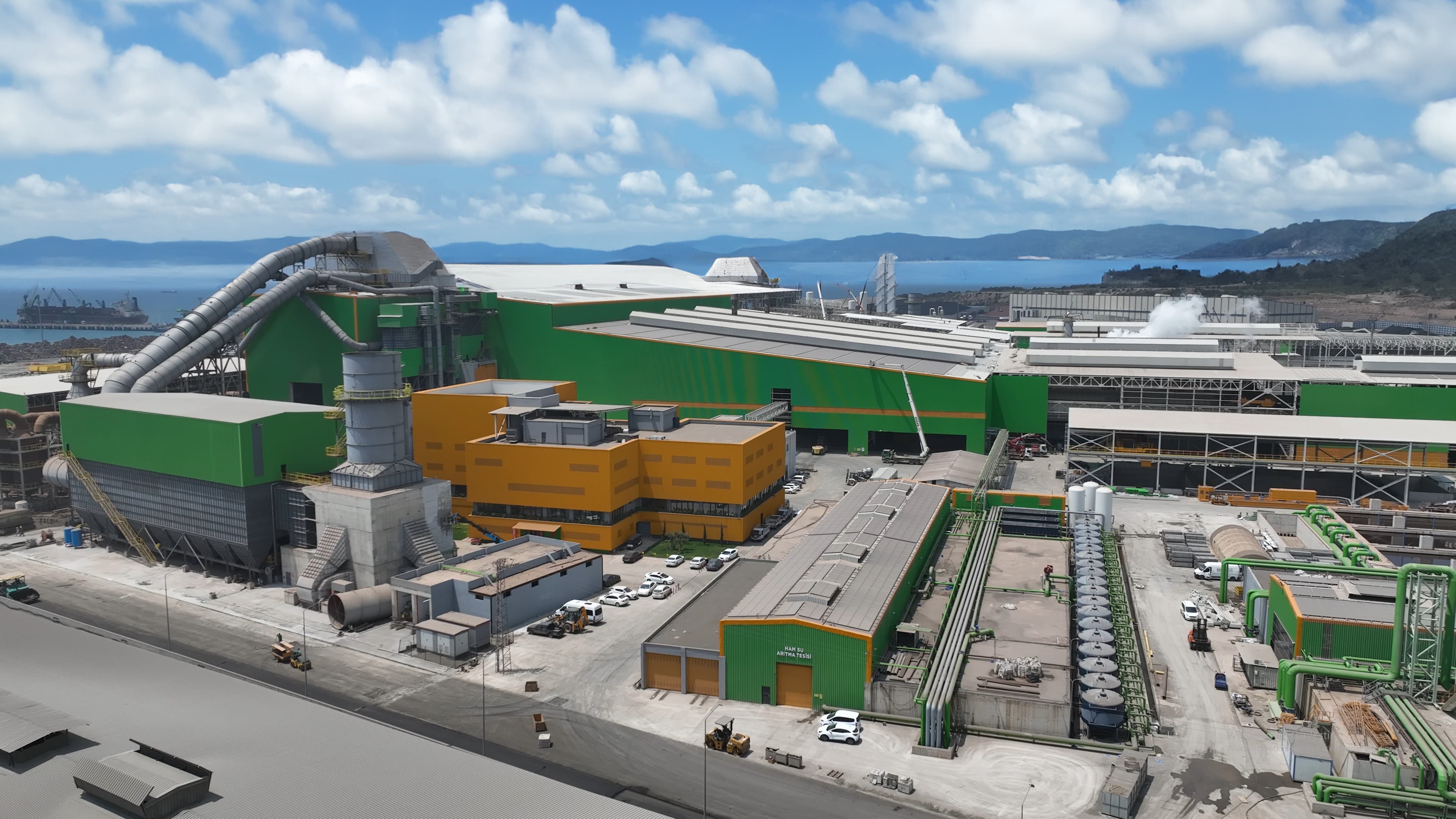| Symbols and Abbreviations Used for Chemical Elements | Symbols and Abbreviations Used for Mechanical Testing | ||
|---|---|---|---|
| Symbol | Element | Symbol | Element |
| C | Carbon | Re | Yield Strength (N/mm 2) |
| Mn | Manganese | Rm | Tensile Strength (N/mm 2 ) |
| P | Phosphor | Rp0,2 | Tensile Strength at elevated temperature |
| S | Sulphur | A | Elongation (%) |
| Si | Silicon | A5 | Elongation (L0 =5,65x√S 0 ) |
| Al | Aluminum | A50 | Elongation (L 0 =50 mm) |
| Cu | Copper | A80 | Elongation (L 0 =80 mm) |
| N | Nitrogen | A100 | Elongation (L 0 =100 mm) |
| O | Oxygen | A200 | Elongation (L 0 =200 mm) |
| H | Hydrogen | S 0 | Section Area for Sample (mm 2) |
| Ca | Calcium | L 0 | Initial Length For Sample (mm) |
| Ti | Titanium | d | Thickness (mm) |
| V | Vanadium | t | Ton |
| Cr | Chrome | Darbe | Impact Test |
| Ni | Nickel | KVc | Impact Energy, Joule (J) |
| Mo | Molybdenum | Sıc. | Test Temperature (0C) |
| Nb | Niobium | Katlama | Bend Test |
| B | Boron | kmy | Bend Test Mandrel Radius (mm) |
| Sn | Tin | kmç | Bend Test Mandrel Diameter (mm) |
| Fe | Ferro | en | Sample from Perpendicular to Rolling Direction |
| Zn | Zinc | boy. | Sample from Rolling Direction |
| Pb | Lead | HRB | Hardness - Rockwell |
| As | Arsenic | ppm | Parts per Million |
| W | Volfram | DWTT | Drop Weight Test |
| Zr | Zirconium | Std. | Standard |
Steel and Innovation: Innovative Approaches for Sustainability

Contrary to popular belief, the steel industry plays a critical role not only for economic growth, but also for achieving sustainability goals. This is because the industry is considered a pioneer of innovative approaches as a result of environmentally friendly production processes and innovation. If you are wondering what research the steel industry is pioneering as well as the values it provides for the environment, you can continue reading the article by focusing your attention.
Innovation's Contribution to Sustainability
In the steel industry, the concept of innovation is always at the forefront in the development of environmentally friendly production processes. Steel production facilities restructured within the framework of innovation prepare the ground for minimizing environmental impact by reducing both waste and emissions. Therefore, making materials reusable, especially through recycling technologies, is considered as an important step in terms of industrial sustainability.
Innovation also contributes to the development of new technologies to increase energy efficiency in steel production. For example, processes that consume less energy and innovative energy recovery systems enable the industry to achieve its sustainability goal. Thus, steel products are no longer a threat as the negative impact of production processes completed with less energy use is reduced.
Innovation offers solutions to the steel industry in many areas and fully supports the goal of reducing carbon dioxide emissions. Carbon capture technologies used during production make it possible to reduce the carbon footprint, while the development of lighter and more durable steels reduces energy consumption performance. In short, when innovation in steel production is considered comprehensively, the positive impacts on the environment are countless.
Innovative design approaches and material choices used in production support longer product life cycles. In other words, innovation in the steel industry plays a decisive role in the life cycle management of the resulting materials. In addition, the design of products in accordance with recycling processes is among the important details in the context of reducing waste.
Innovative Materials and Production Technologies
Innovative materials and production technologies offer a more efficient approach to steel production than traditional methods. To explain the methods utilized at this point in detail:
Use of Nanotechnology
With the use of nanotechnology, the mechanical properties of steel products are optimized while at the same time using less raw material. In this way, important steps are taken in terms of resource efficiency and environmental sustainability.
Smart Manufacturing and IoT Applications
By integrating different technologies, such as innovation, smart manufacturing systems or the Internet of Things, steel production can be transformed. For example, by using sensors as well as data analytics, production processes can be made much more efficient. Moreover, energy consumption is optimized while ensuring the effective use of resources in steel production.
Application of 3D Printing Technology
3D printing technology used in the steel industry should be considered revolutionary. Because 3D printing technology creates flexibility in the creation of complex parts, while reducing waste production and allowing less material to be consumed.
Improving Recycling Technologies
The steel industry, which constantly innovates in recycling technologies, helps reduce the consumption of natural resources by reusing waste steel material as a result of effective processes.
Transition from Steel to Bioavailable Materials
Although not yet possible, the transition from steel to biodegradable materials may be on the agenda in the future in terms of innovative material use. The development of materials with biodegradable properties that are less harmful to nature can be shown among the important moves in the transformation of the steel industry. In addition, while the environmental impact of the steel industry is planned to be reduced with biodegradable materials, the goal of ensuring that the products created have a positive impact on ecological life throughout their lifetime can be realized.
R&D and Innovation Investments
The steel industry continuously aims to develop innovative solutions through investments in R&D. Current investments focus on reducing environmental impact, particularly by increasing the efficiency of steel production. Therefore, R&D activities in areas such as the discovery of new materials, improvements in production processes or the development of environmentally friendly technologies are important for the improvement of the sector. Here are the various R&D and innovation investments that fall within the steel industry's scope of activity:
● University - Industry Collaborations: The steel industry, which constantly cooperates with universities, naturally keeps its R&D activities strong. At the same time, these collaborations also help to transform academic research into industrial applications. In short, as a result of R&D activities that utilize the scientific knowledge of universities, concrete resources are created to improve industrial processes or develop environmentally friendly solutions.
● Innovative Financing Models and Incentives: Both innovation and R&D require a certain amount of financing. The steel industry also uses financing models or incentives for innovation and R&D. Incentives such as government-sponsored programs, tax breaks, R&D grants or funds encourage companies to work on innovative solutions.
● Global Collaborations and Knowledge Sharing: The steel industry encourages collaborations in R&D and innovation that operate on a global scale. As a result of these collaborations, organizations in different countries come together and carry out joint projects, while the resulting knowledge sharing contributes to the faster progress of the sector.
● Research on Carbon Free Steel Production: The steelmaking industry, which conducts intensive R&D activities on carbon-free steel production, also conducts a lot of research on alternative raw materials or production processes to reduce carbon emissions.
● Bioengineering and Materials Development: R&D efforts can be directed towards improving the properties of steel materials in the field of bioengineering. For example, applications inspired by nature can increase the strength of materials and reduce environmental impacts.
All the items listed show that R&D and innovation in the steel industry focus on different areas. It also clearly shows how critical it is for the industry to work on new material development, carbon-free production, digitalization, recycling technologies or carbon management in line with sustainability goals.
Examples of Innovation in the Steel Industry
In recent years, the development of aluminum - steel composites in the steel industry has been one of the innovation steps taken. Known for their lightness and durability, composites are also recyclable like steel. Generally used in areas such as the automotive industry, composites help create environmentally friendly products.
Robotic integration and improvements in smart production systems are among the areas of innovation in the steel industry. In particular, the integration of robots into production processes allows for increased productivity as a result of reduced human errors. In addition, smart production systems, combined with data analytics and artificial intelligence technologies, make production processes optimizable.
In the future, the role of innovation for the steel industry is expected to grow and the importance of investments in this area is expected to increase. Therefore, investments in R&D activities, as well as advances in production technologies or global collaborations, can make a major contribution to the industry achieving its sustainability goal.
In conclusion, innovation in the steel industry should be considered as a critical element for sustainability. This is because the continuous fostering of innovations directly helps to ensure the continuity of the industry, whether environmentally, economically or socially.
Tosyalı Holding, which has made a name for itself with its work in the fields of ecosystem management and carbon-free steel production, takes an active role in every process needed to make the world a more livable place with the approaches it puts forward.



